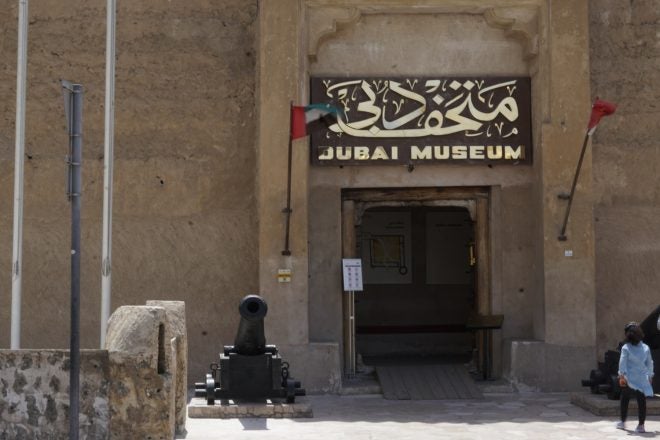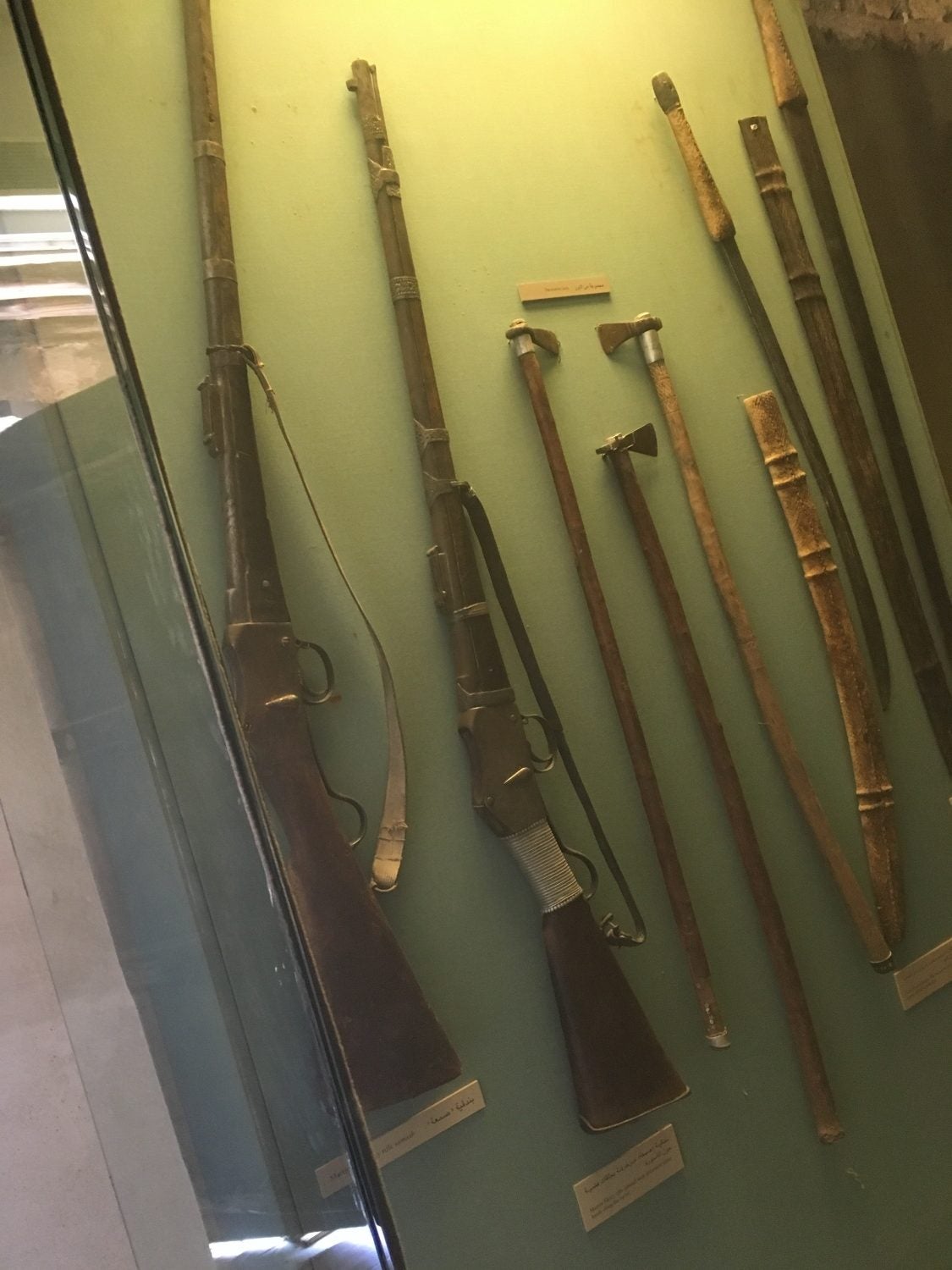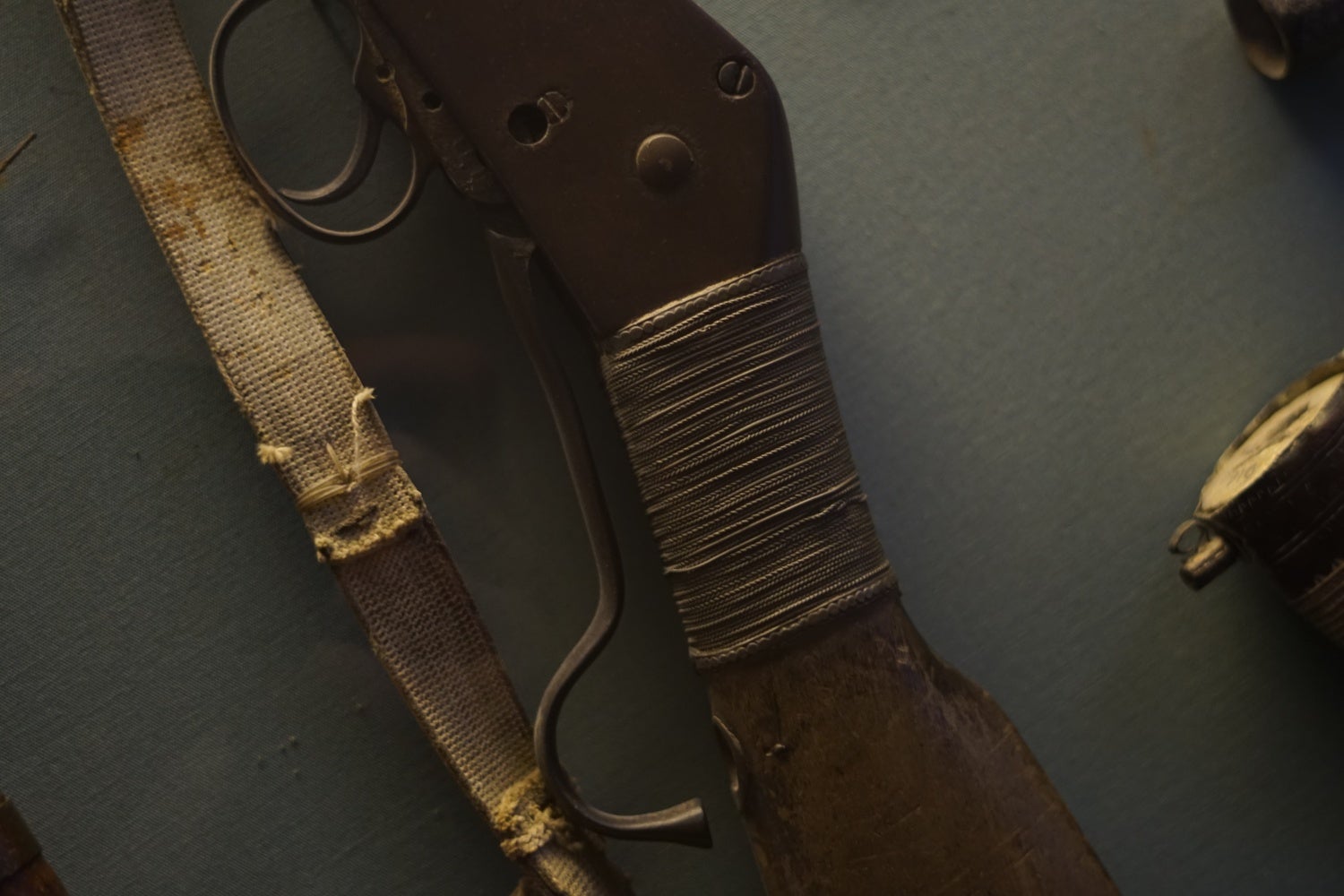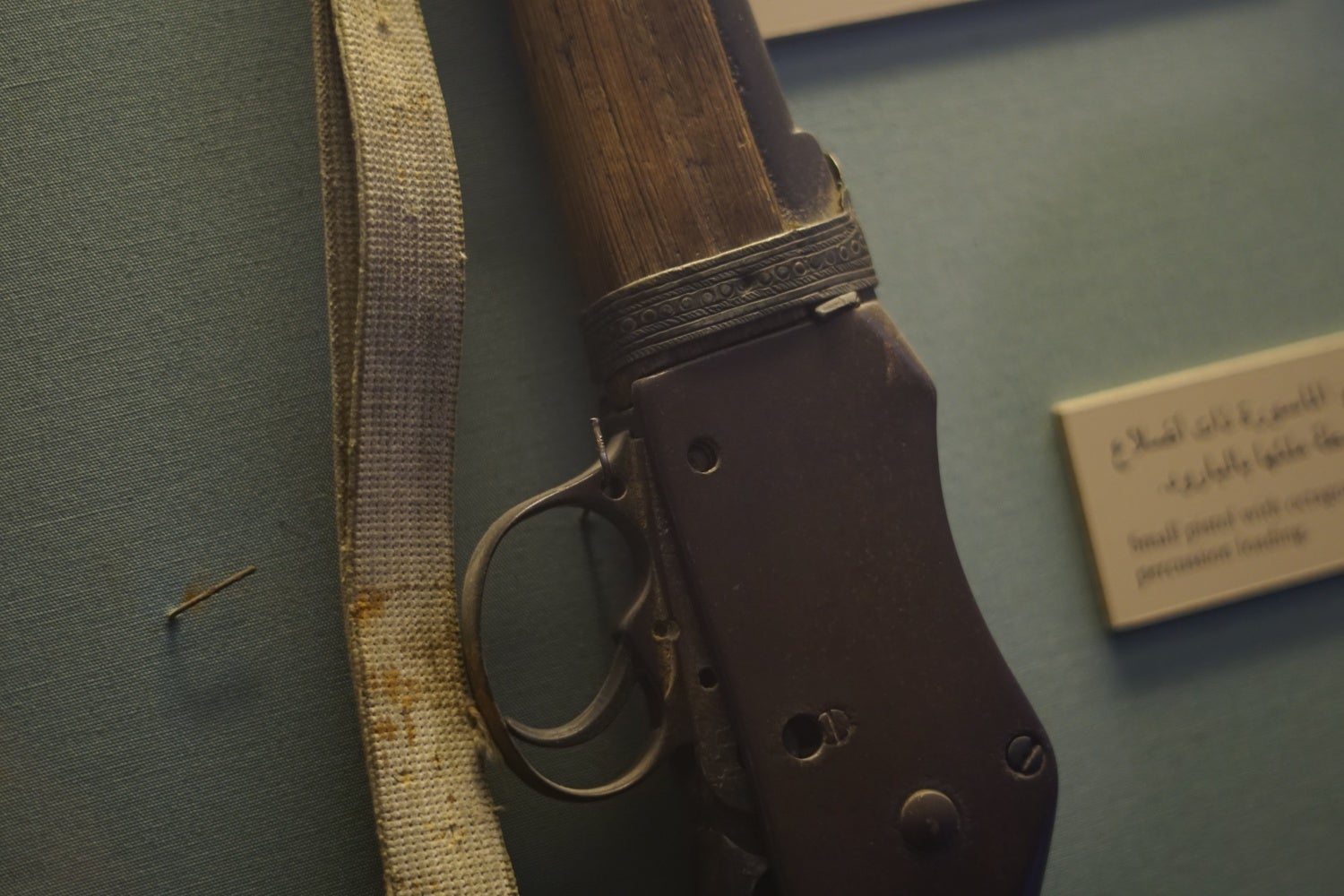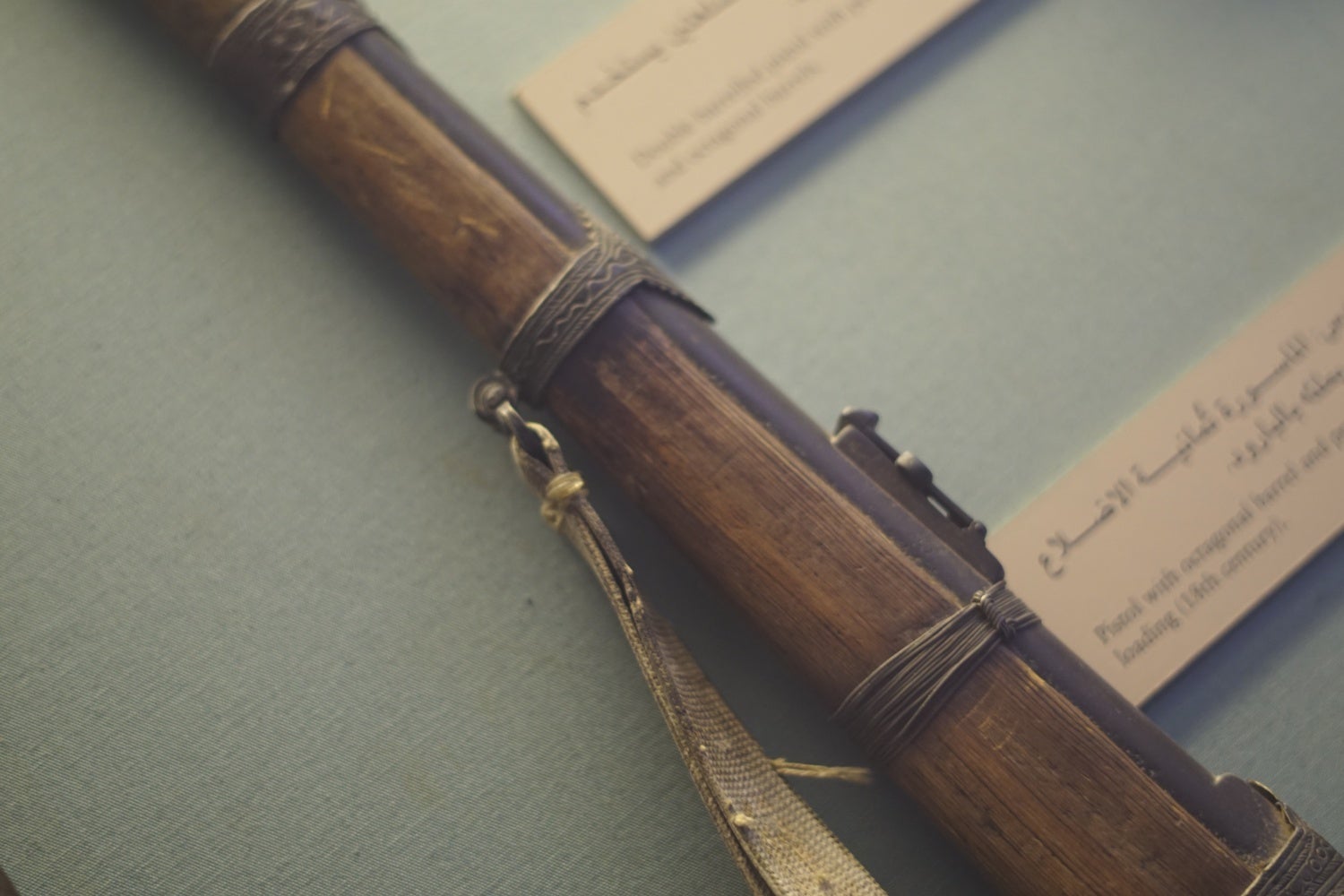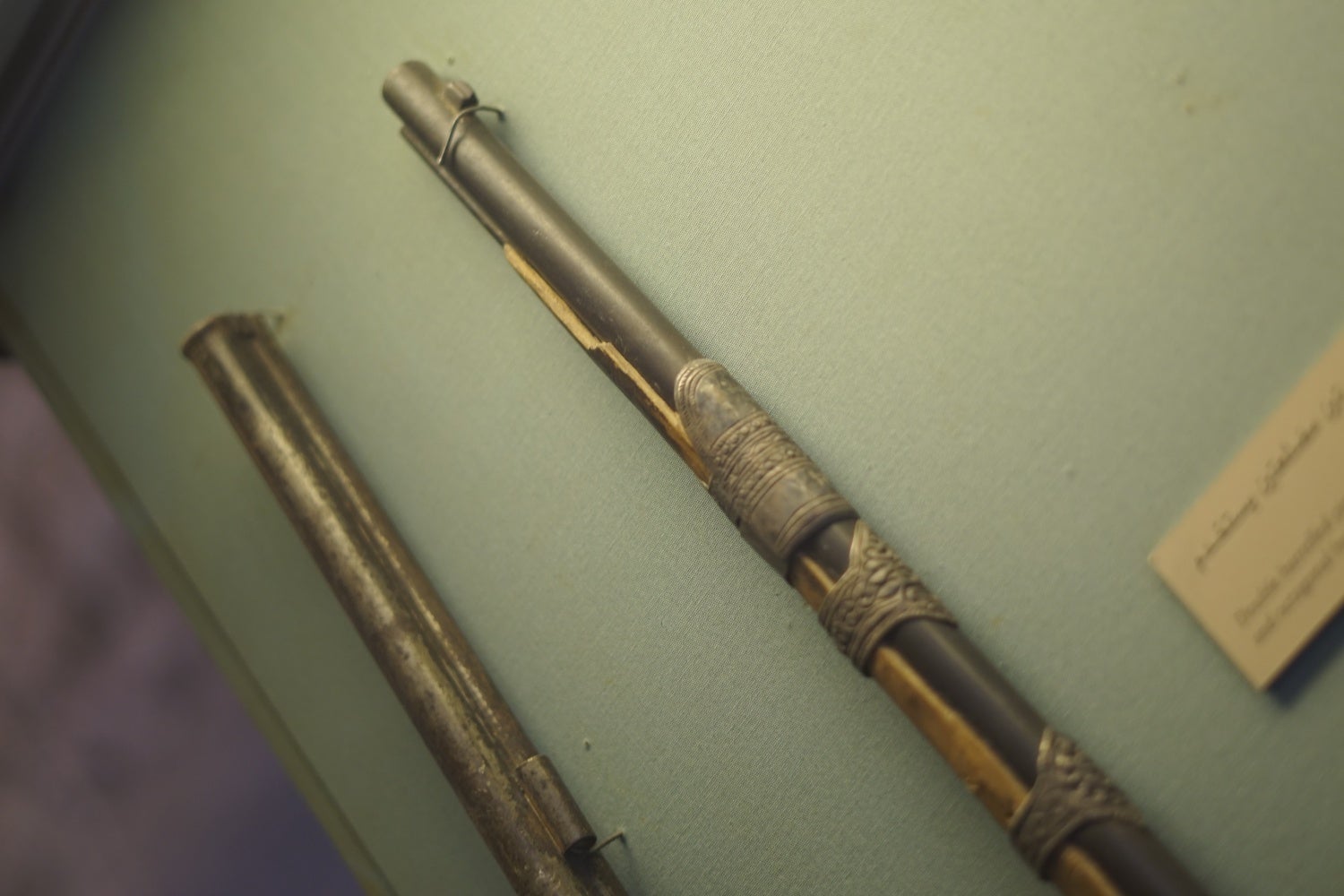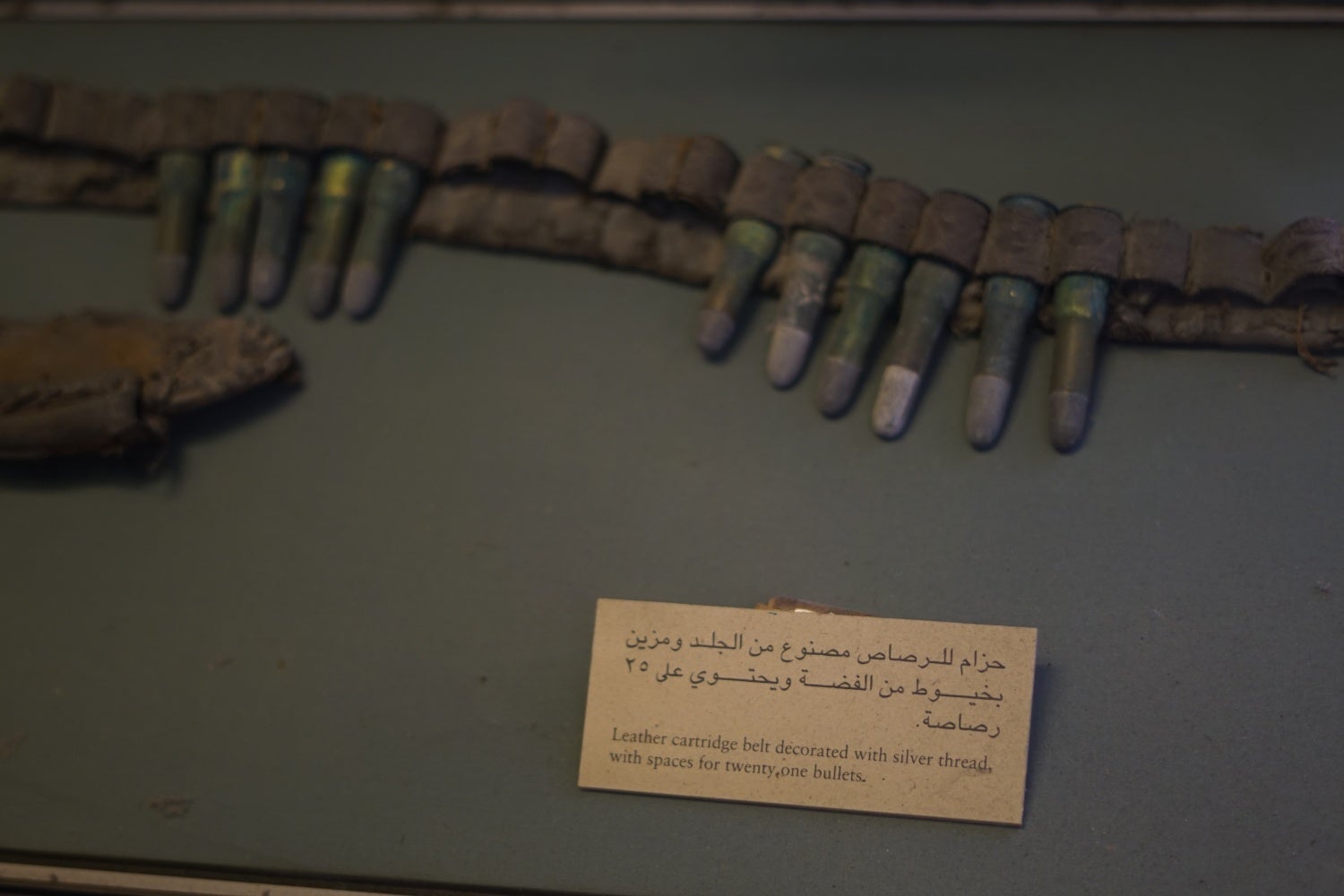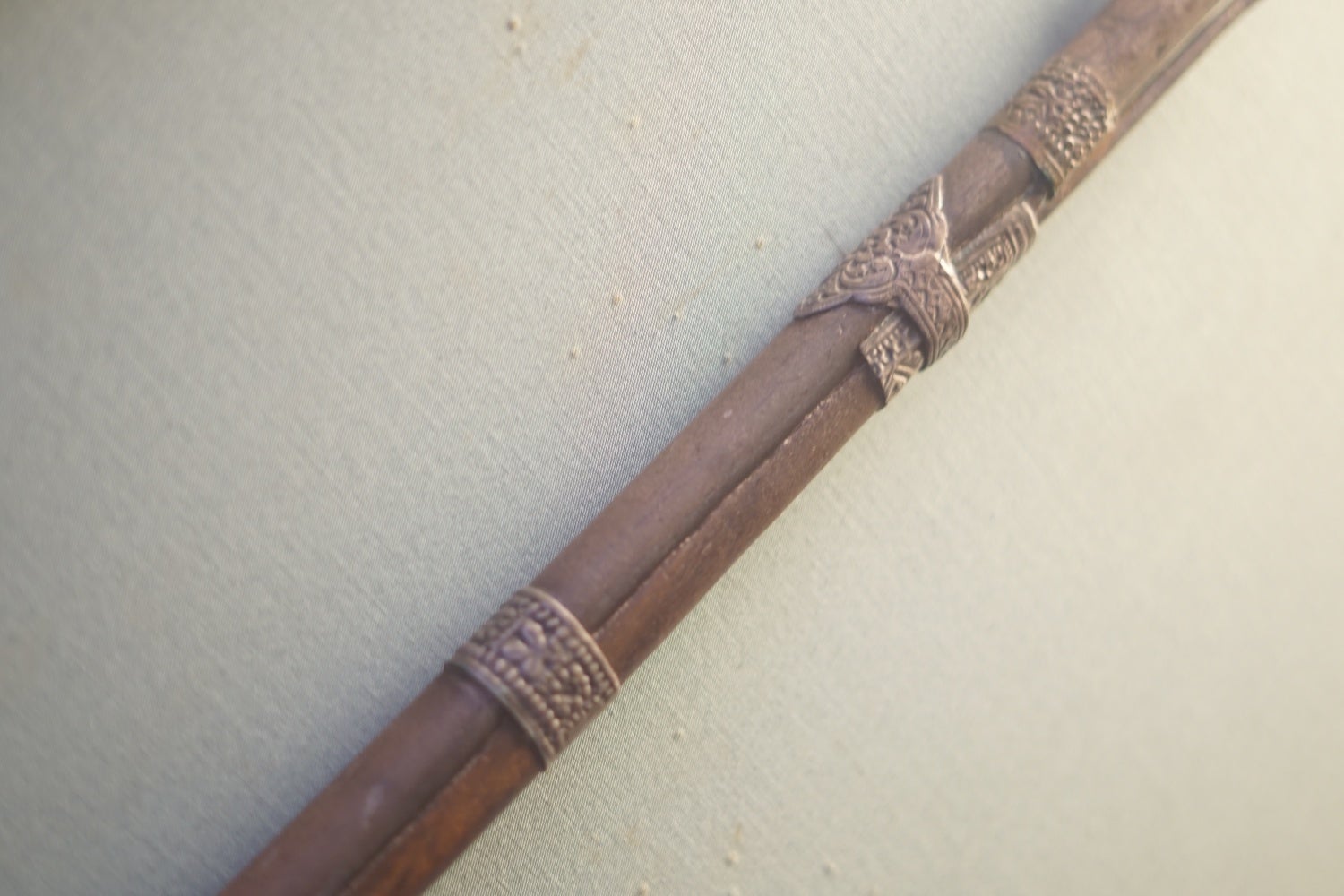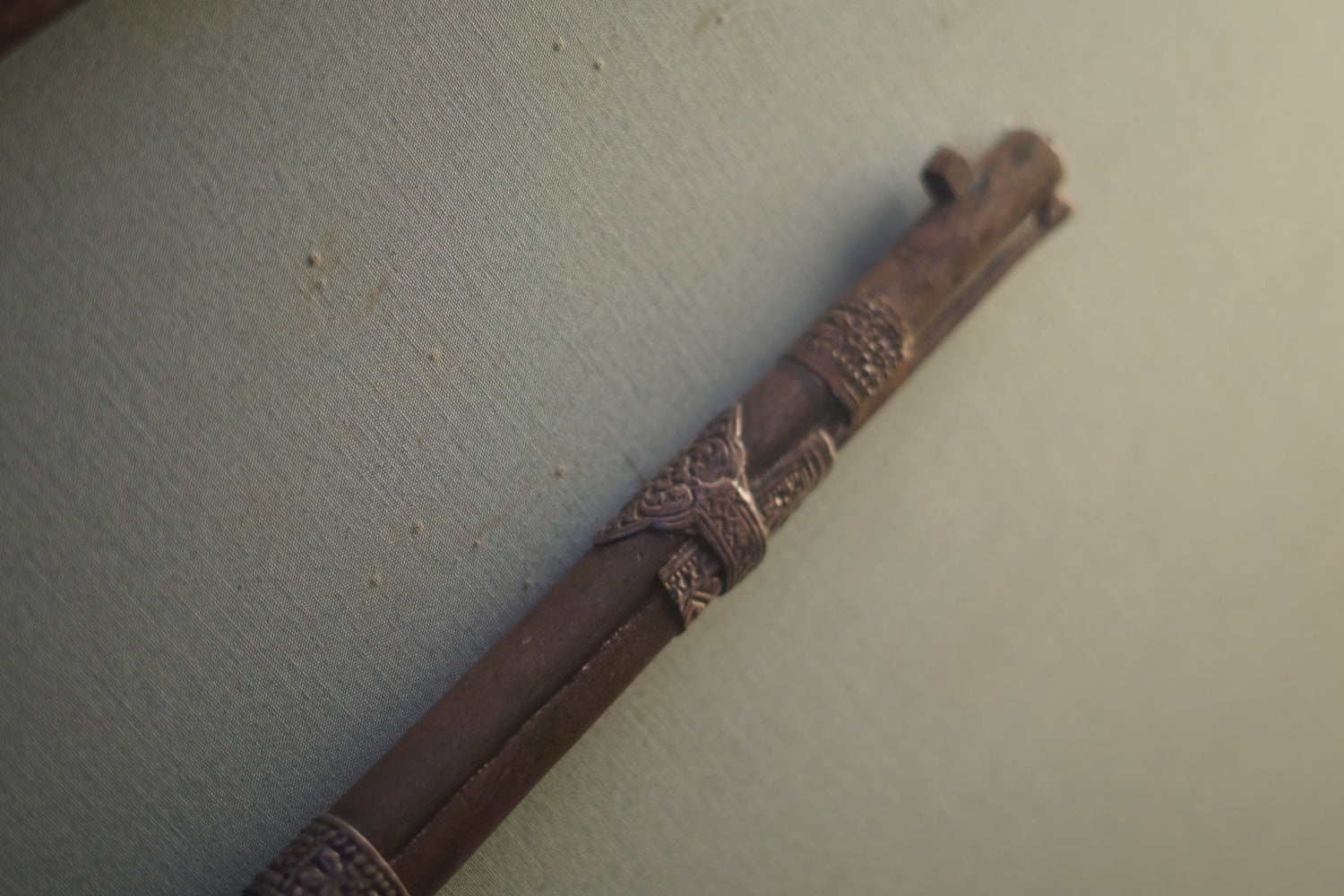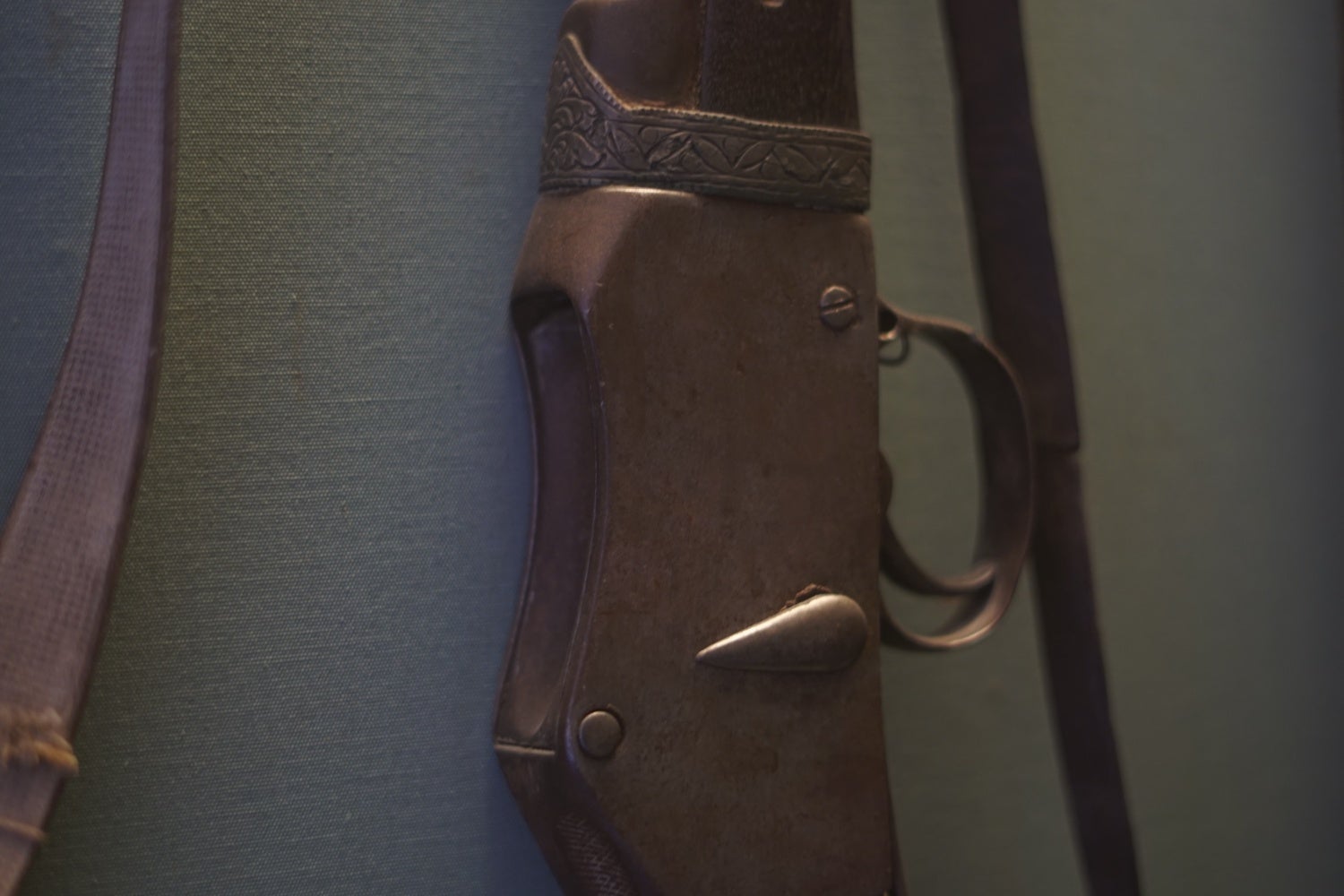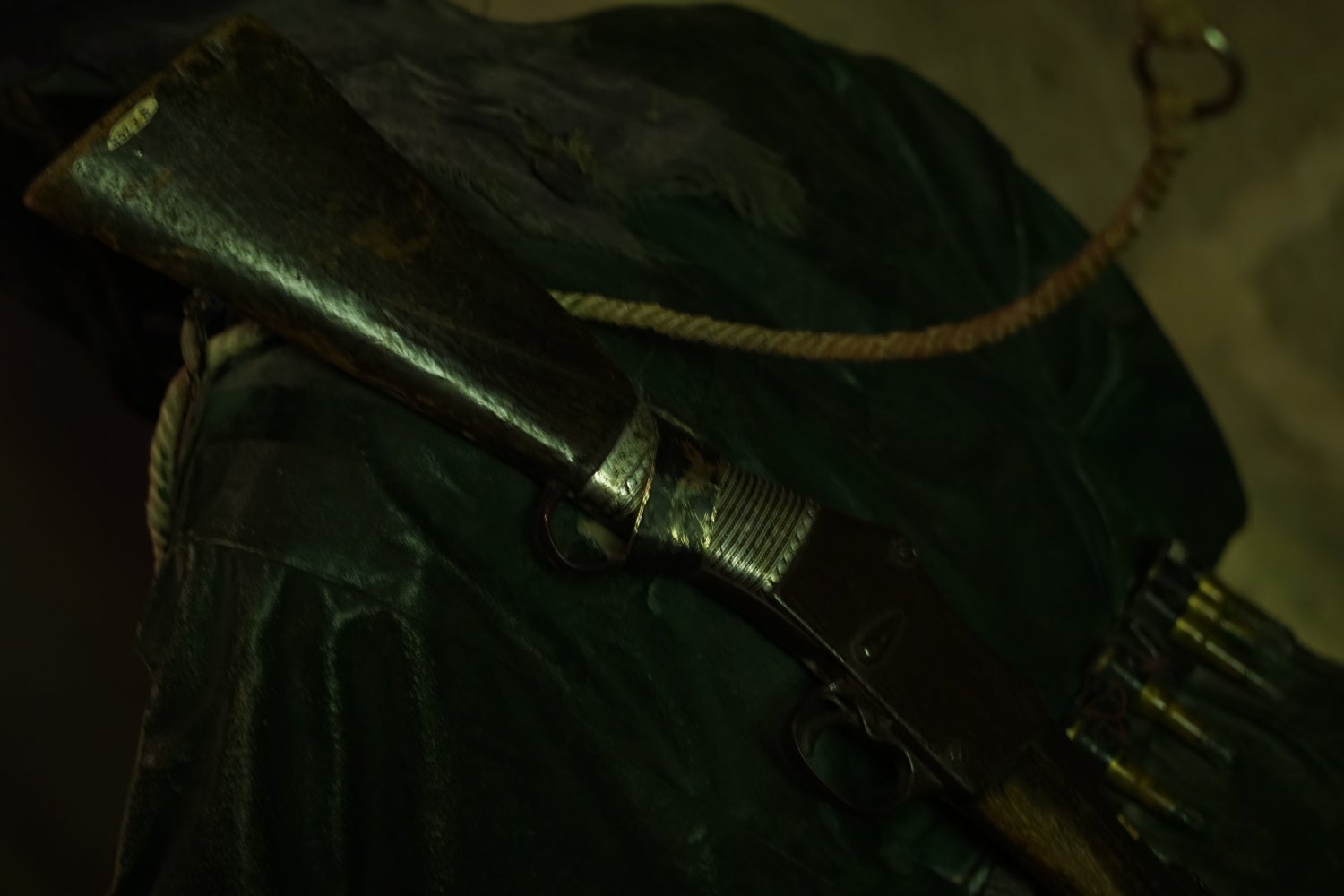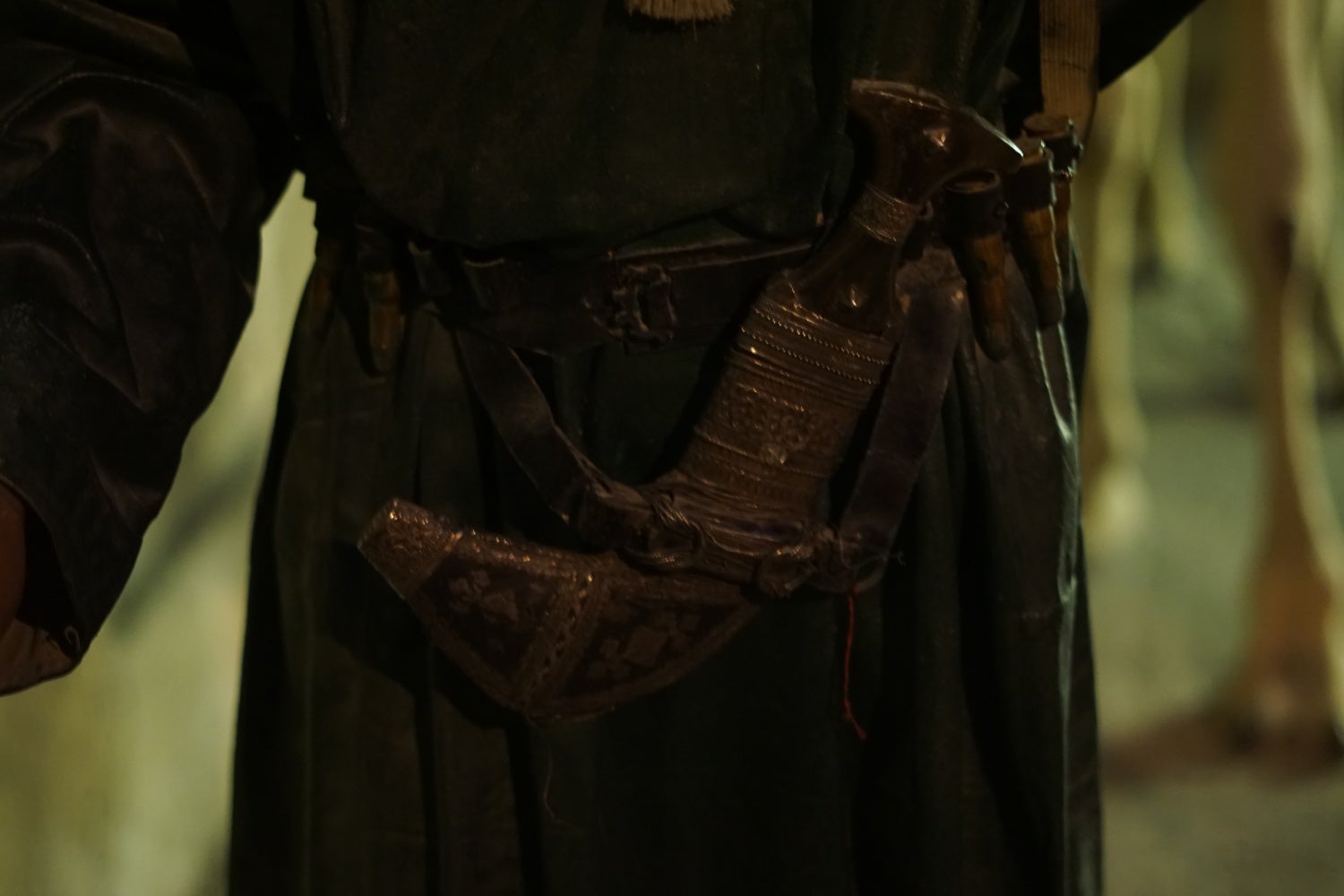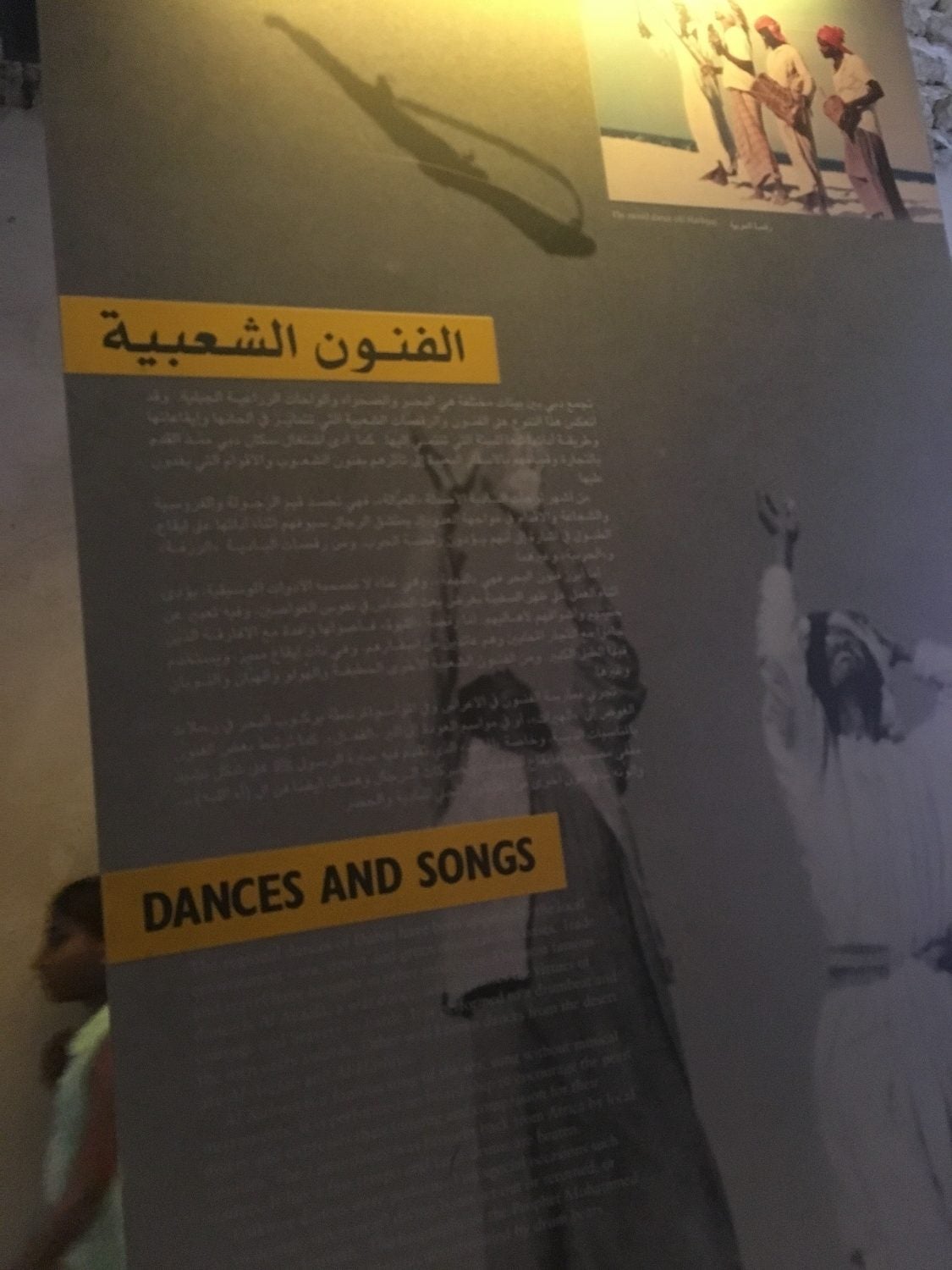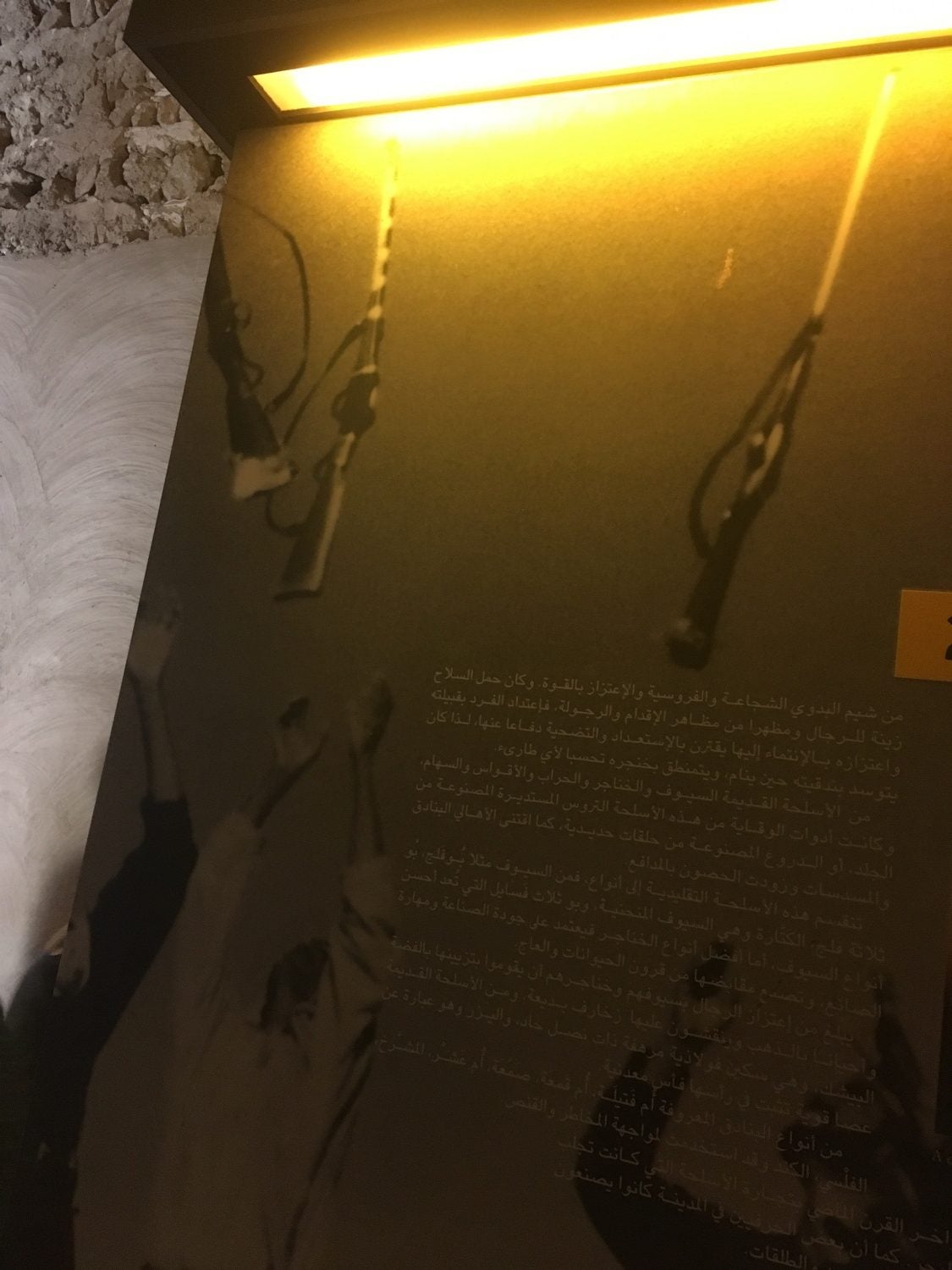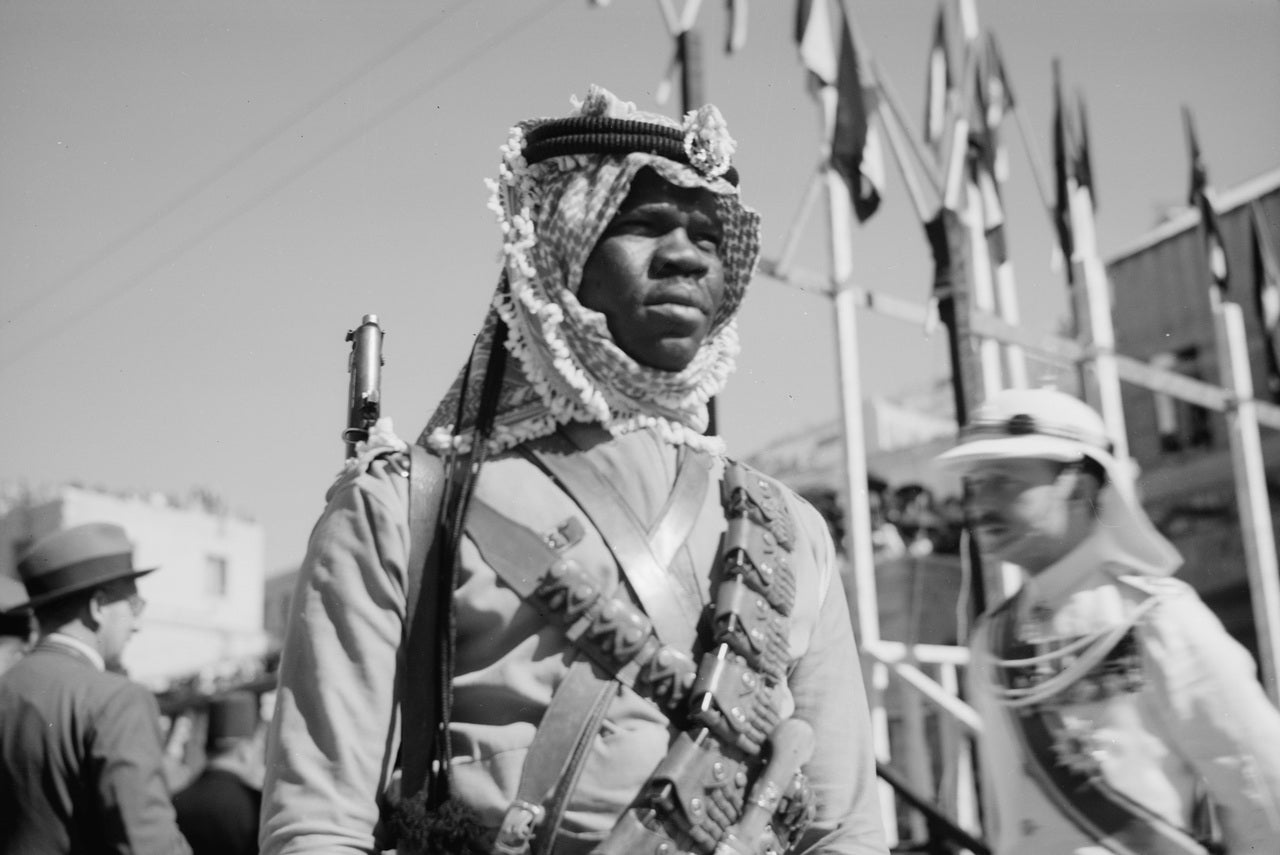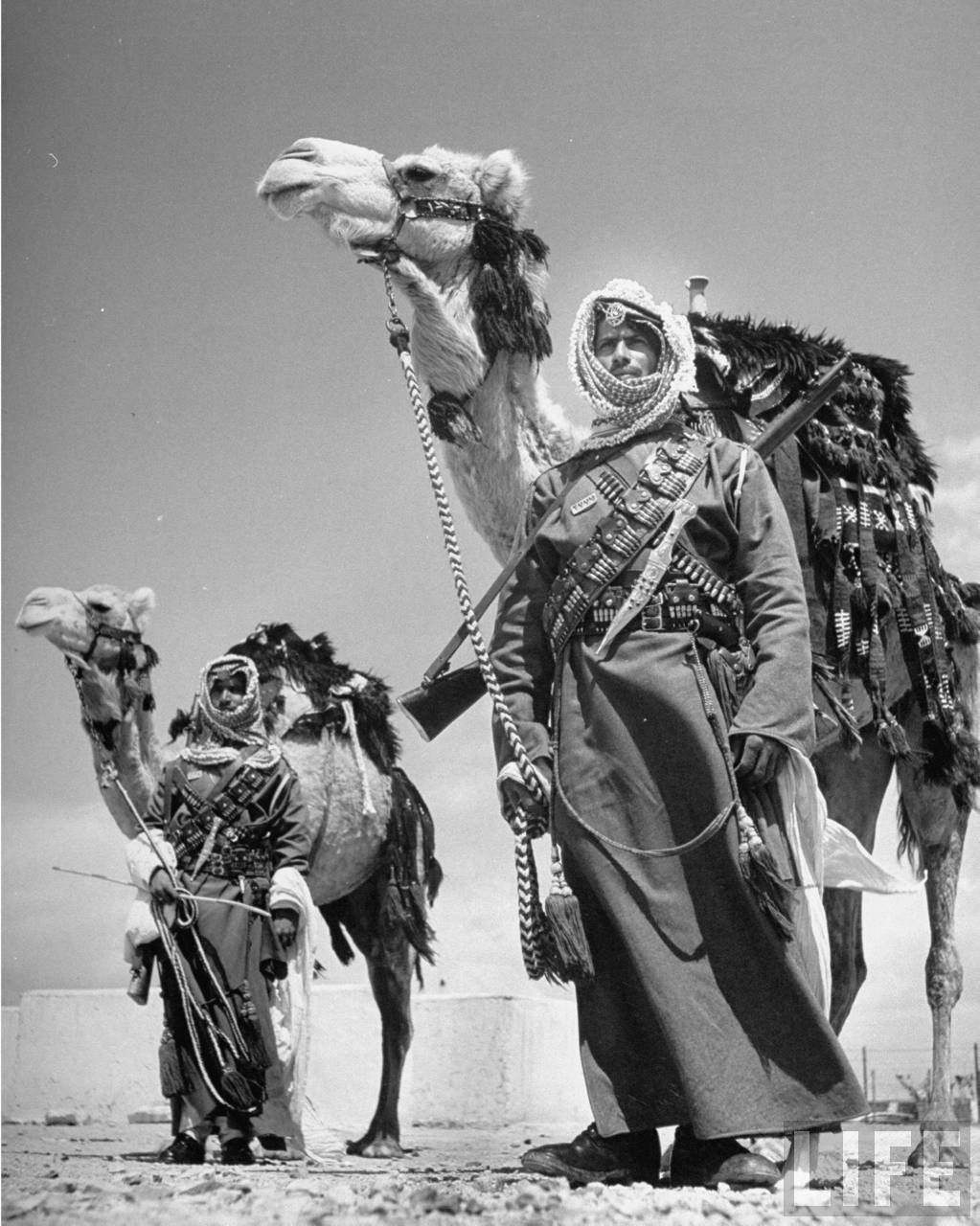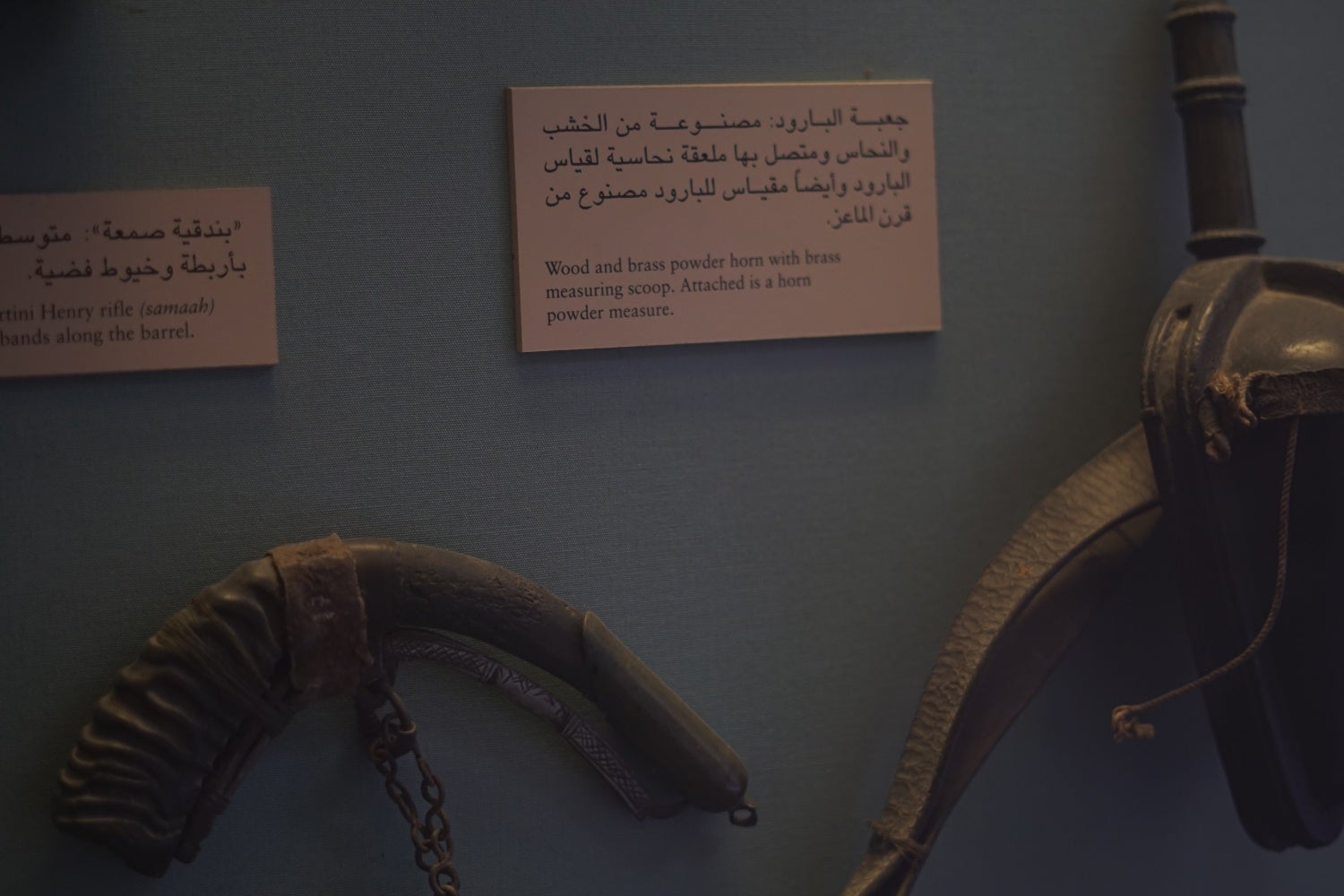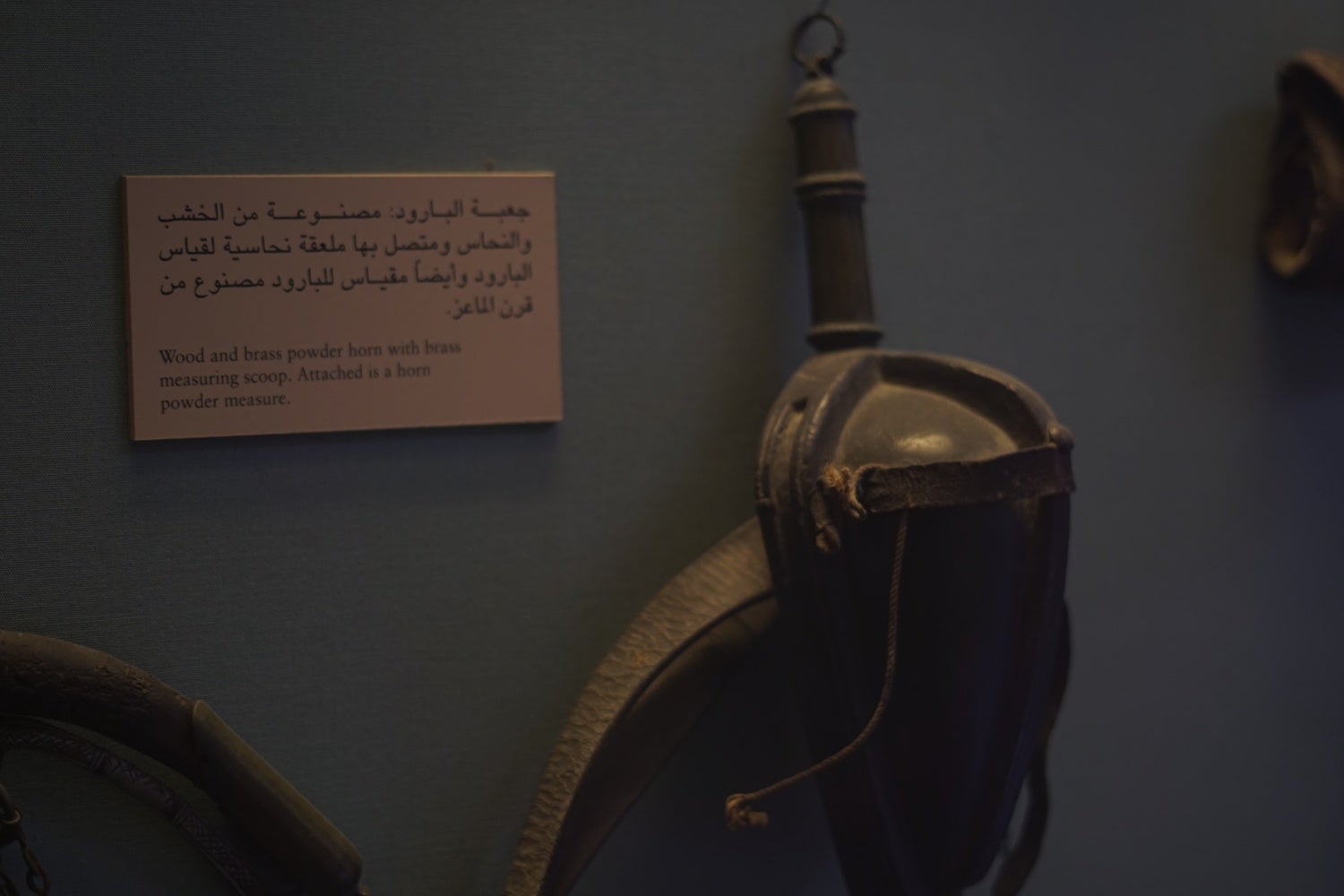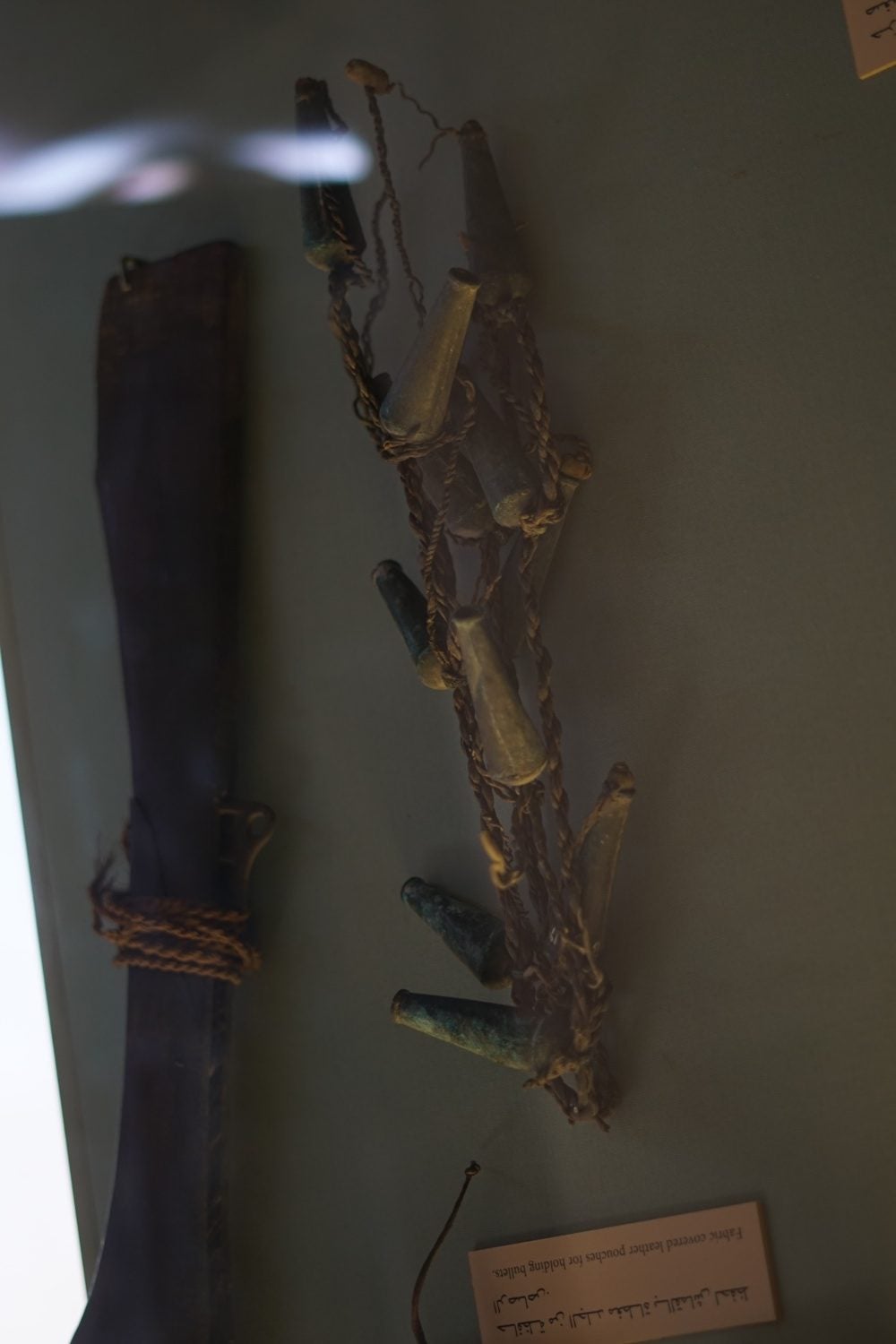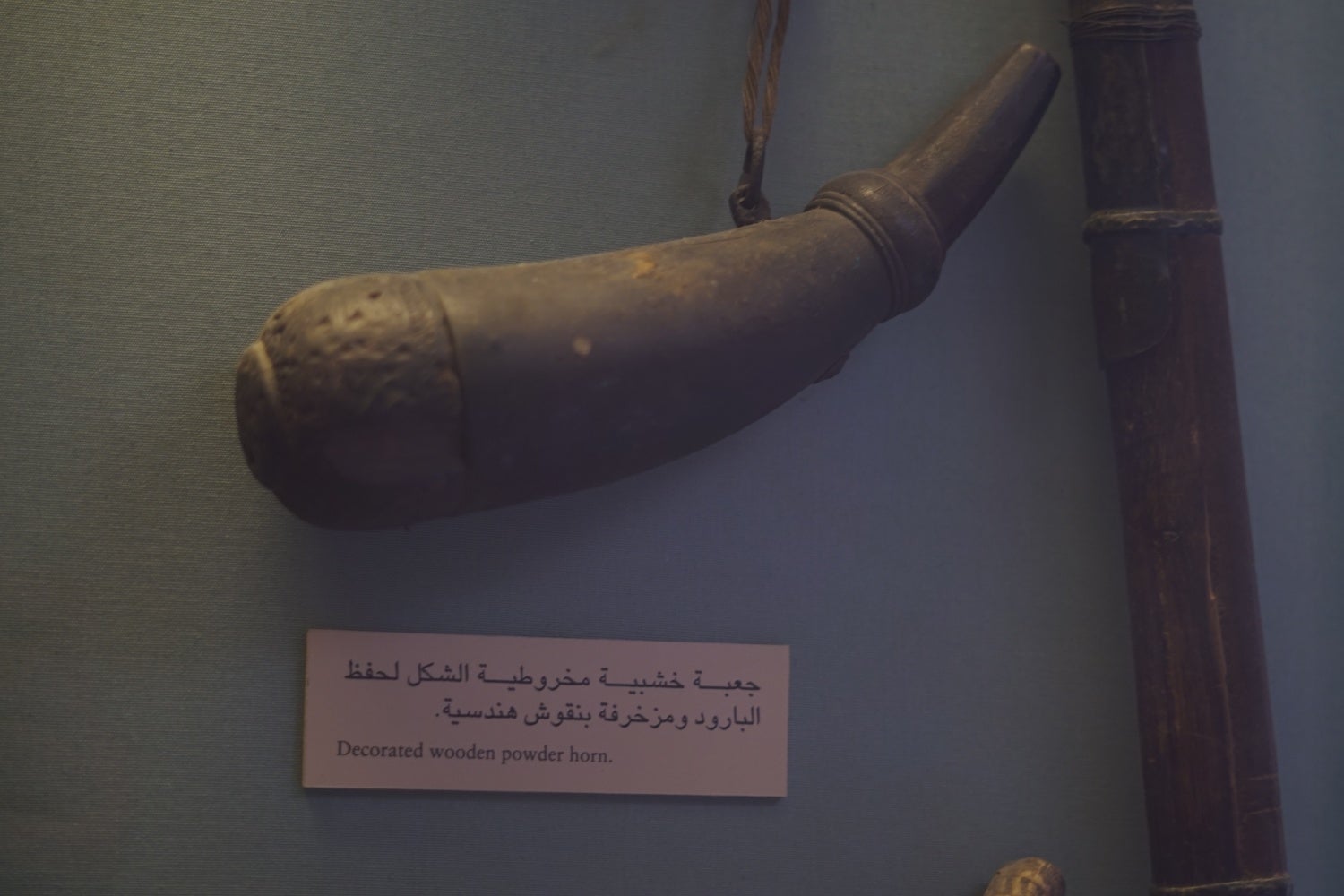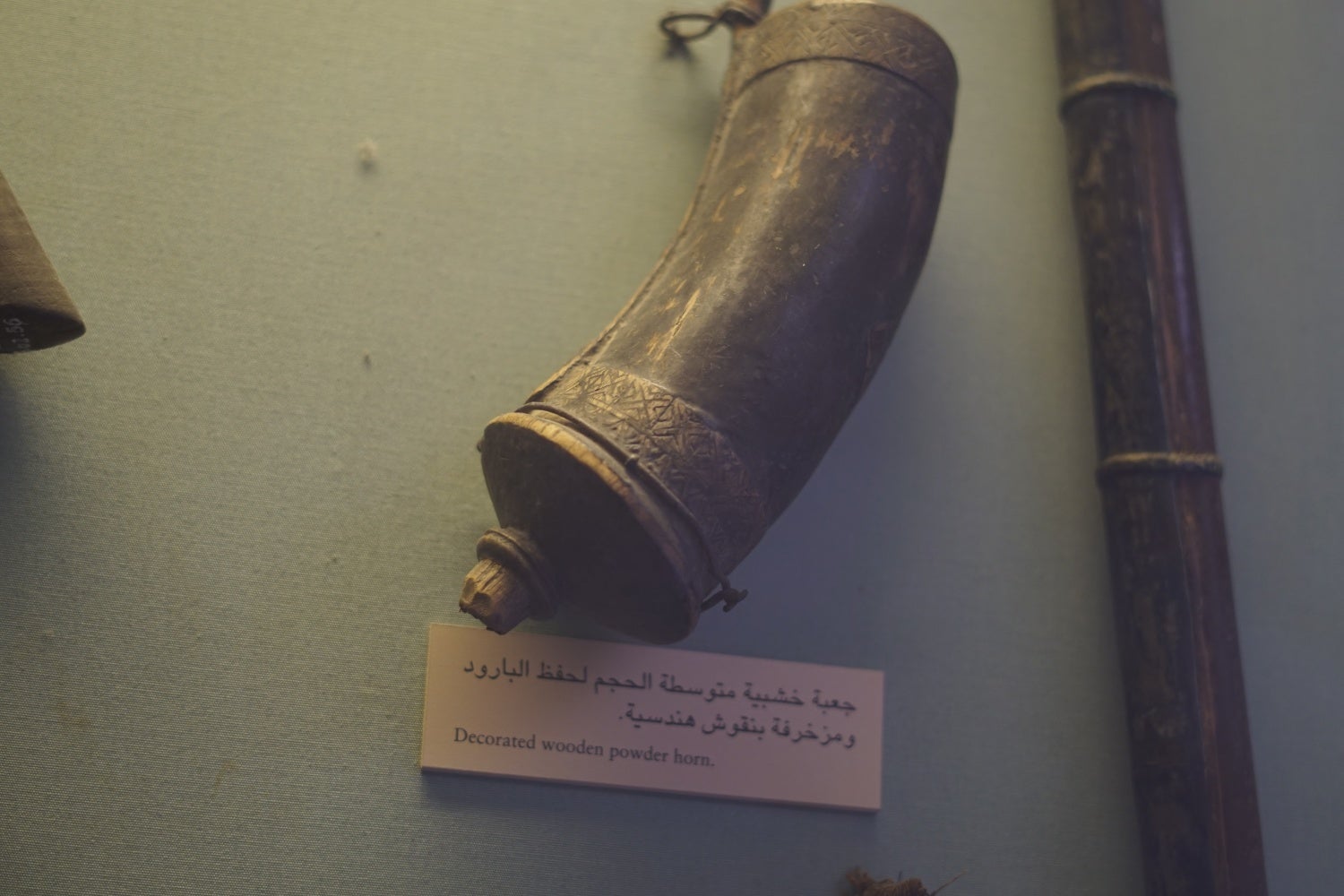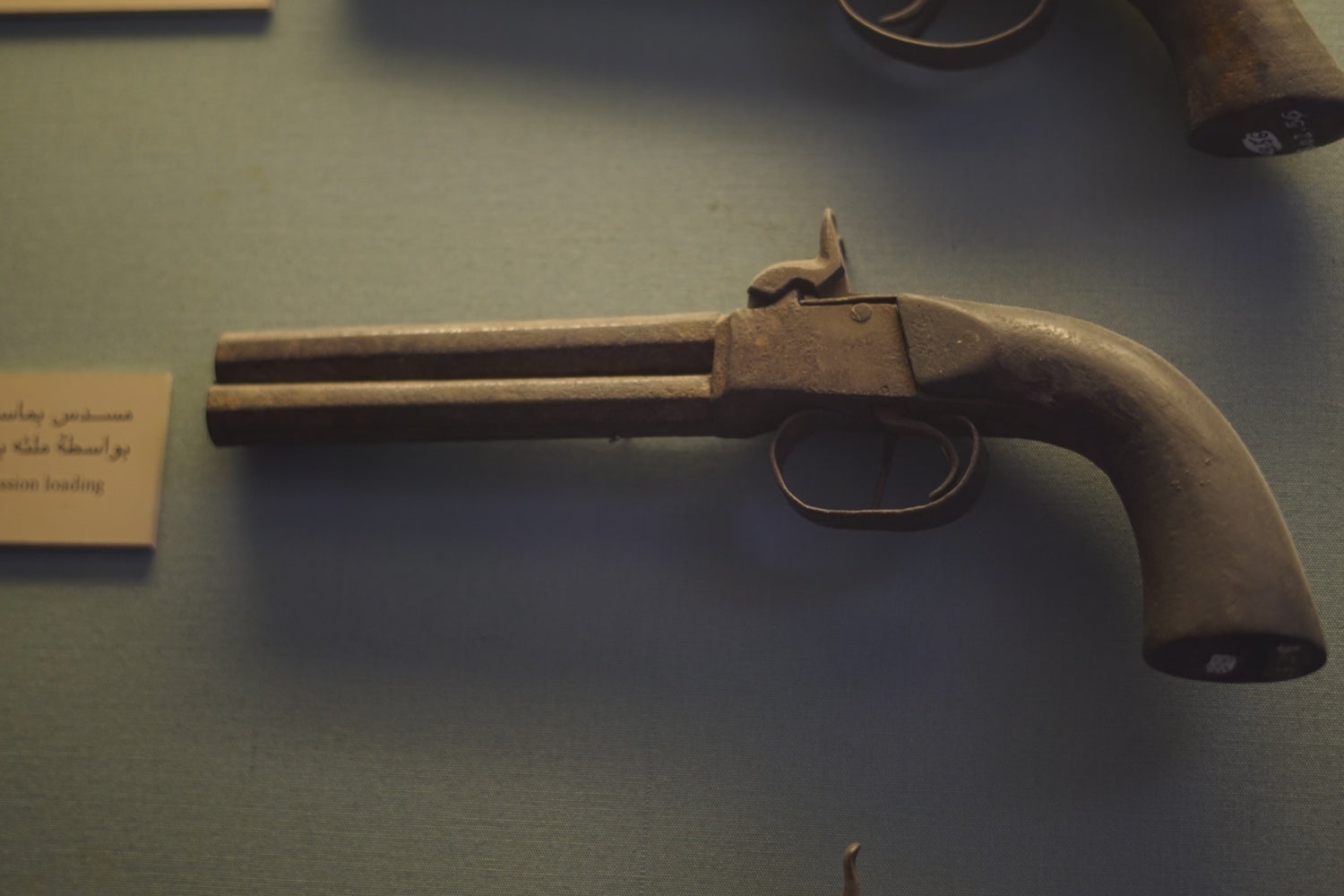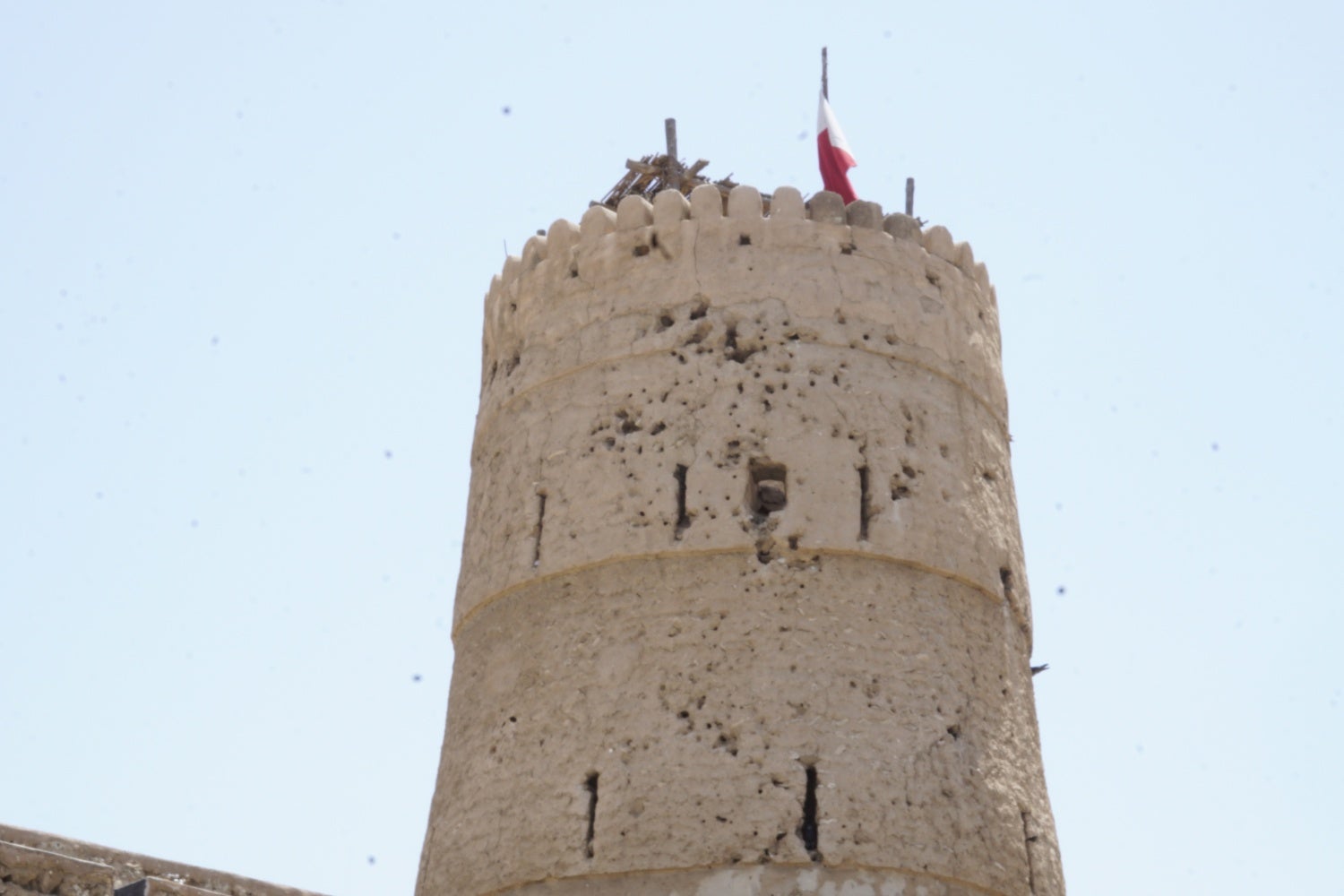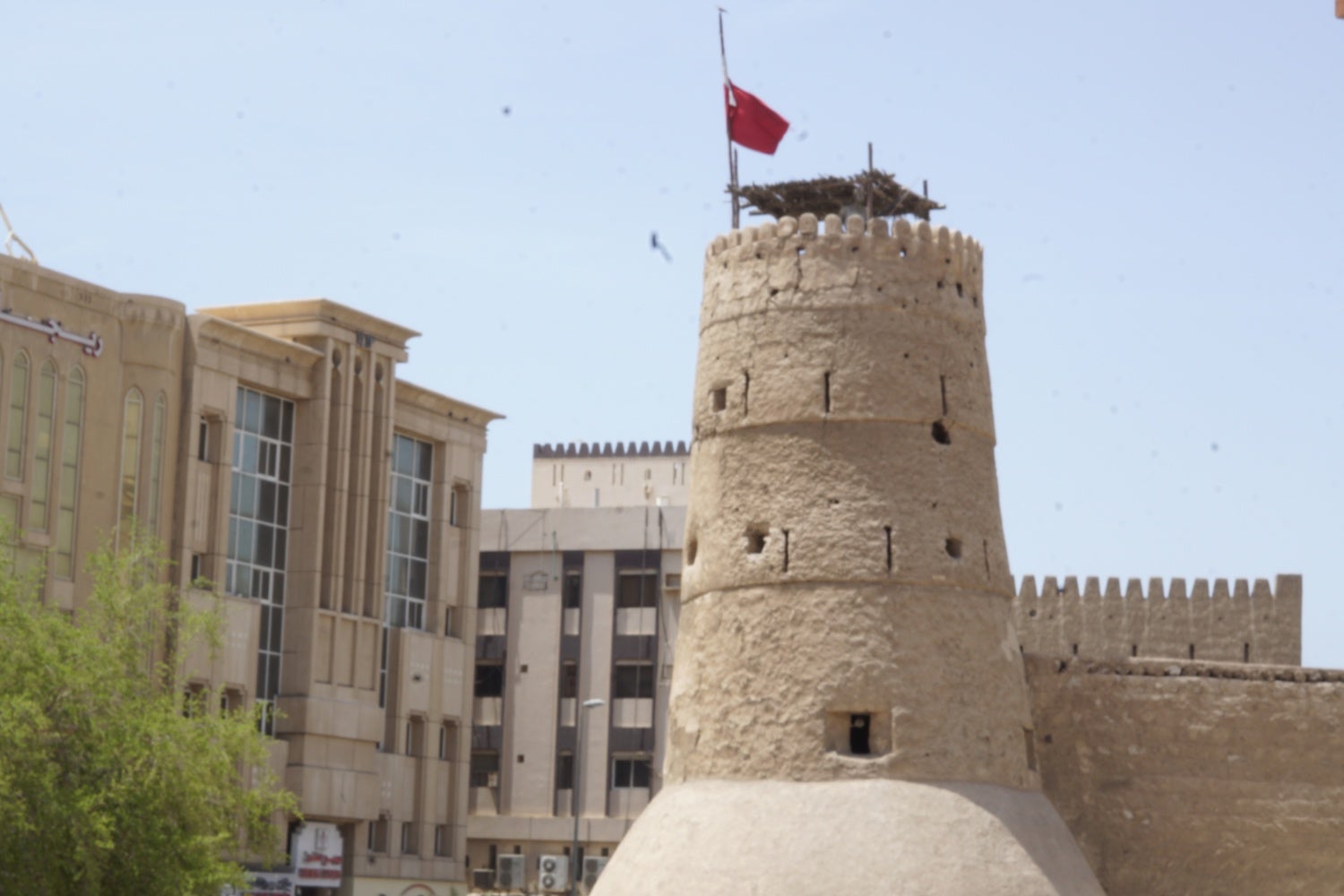Available to those transiting through or vacationing in Dubai is the tucked away gem of the Dubai Museum and Al Faidi Fort. The museum tells the story of the pre-historic surroundings and the small hamlet that would eventually become the sprawling metropolis that is the Dubai of today. Although the museum itself is an all-encompassing history of the local region, there are a number of displays that pay particular attention to the small arms in use during the late 1800s and early 1900s. If you have limited time in Dubai, certainly enjoy the beaches and the Burj Khalifa, but if you want to see some historical small arms and a bit of Dubai’s journey into the 21st Century, I would highly recommend checking the museum out. Admission is 3 AED for adults and 1 AED for children.
The “Arab” Martini-Henry
Called the “بندقیه صمعه” (Bandaqi-Samah) in Arabic, the Martini-Henry gained prominence across the Arabian Peninsula in the late 1800s when it was first introduced through the European presence in the area. Later replaced by the Lee Enfield through efforts at arming Arab tribes against the Ottoman Empire in the First World War, the Samah became an endearing part of the Arabian landscape. Especially among many Beduin tribes which have always placed a high priority on survival and being able to fend for themselves. This falls into the martial culture that has always been a part of the social atmosphere. It is seen much less today as many Arab communities have become urbanized and the need to fight off enemies has dramatically decreased. But we still see it in a ceremonial form with a “Rifle-Dancing” practice that occurs with miniature dummy rifles and the donning of different kinds of shamshirs. This is especially prevalent in Yemen where men are typically seen in traditional dress accompanied with a Janbiya tucked into their cummerbunds.
The Martini-Henrys seen on display had ornamental engravings along the barrel bands and some had wire wrappings around the pistol grip. Presumably, this is for a better gripping surface maybe because fighters had a need to get a better grasp of the rifle while on horse or camel back. A placard mentions that the cartridge belts had silver thread woven into them so it could be possible that the wire on the rifles is also a kind of silver and might have shined much brighter a hundred years ago. Such decoration is found throughout the Islamic world when it comes to small arms, whether it was the norm during the times that the rifles were being used or whether these are the surviving examples that have made their way into modern day collections and displays aren’t known.
Similar to the ornate designs on the rifles we also have these examples of a silver thread being woven into the cartridge belt, most likely for a decorative purpose. The English description mentions that the belt could fit 21 cartridges but the Arabic says 25.
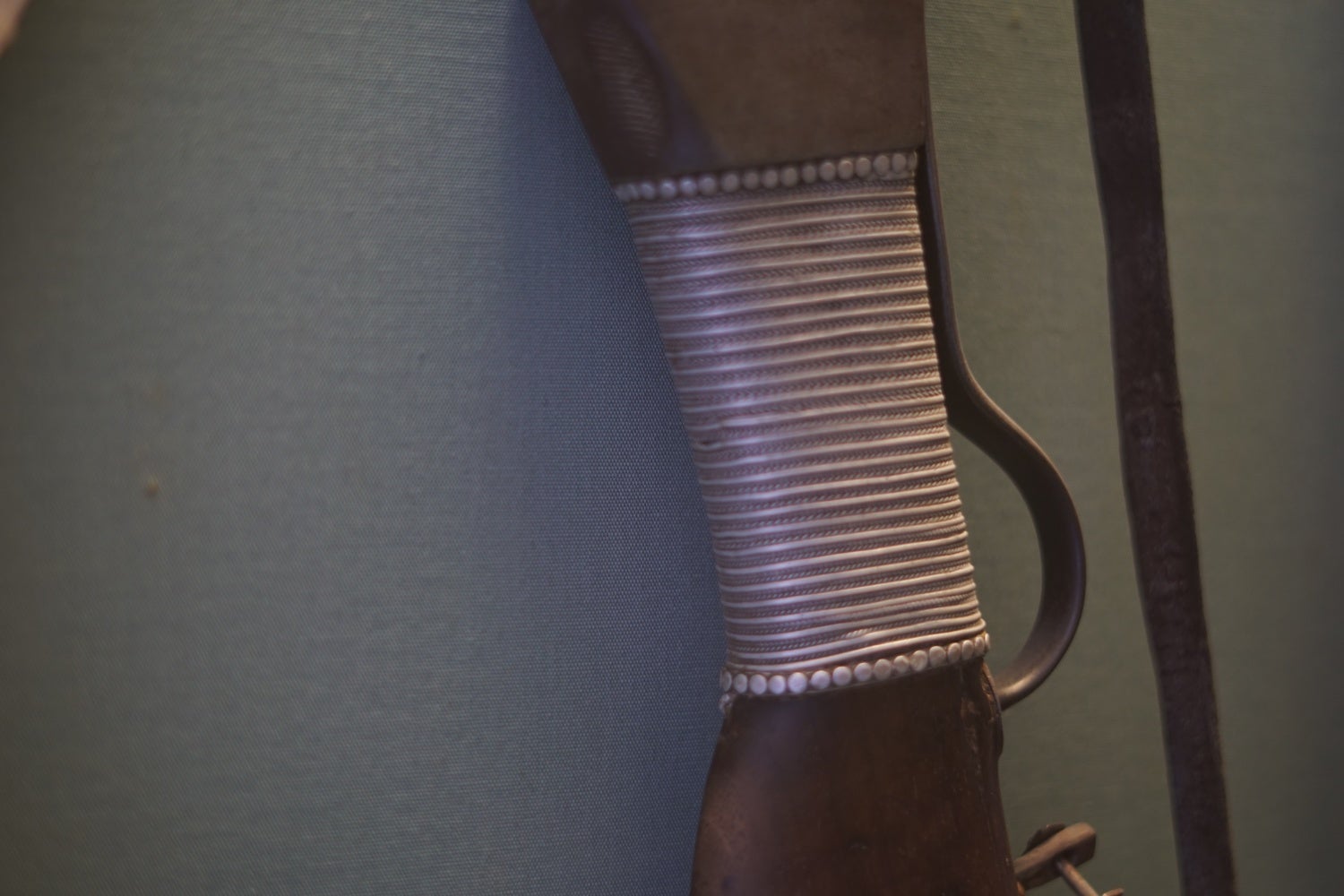
Either a well-kept example or a very well done restoration, readers can get a sense of the decorative nature of the silver wire around the pistol grip.

Although the caption appears to make it look like these pouches are for metallic cartridges, it would appear that these are actually pouches for percussion caps.
These historic photos of Arab fighters in the 20th Century show SMLE’s in use with leather cartridge belts, the generation of small arms that would have replaced the Martini-Henry. Note that the rifle ammunition is placed from the left shoulder to the right hip while the revolver ammunition is crossed underneath it. This is probably so a shooter can have easy access to the .303 rounds with his firing hand to load into the rifle, while at the same time not confusing which belt to choose from.
Muzzleloading Firearms
Also on display were a number of muzzleloading accessories, such as powder horns and associated accouterments. Powder horns were made from a number of different materials, wood, skin, brass, to name a few. Some of them were also highly decorated to match the rifles that they probably would have accompanied. Apart from a few percussion handguns, there were not any muzzleloading rifles or muskets on display.
Why the Decoration?
Although ornate firearms exist in every culture, it would appear that to a martial people such as the Beduin tribes that pride themselves on their ability to defend themselves, a man’s firearm or sword could be a token of their honor. There is a similar phenomenon in Afghanistan with conservative Pashtuns who traditionally see honor or “Nang” as a way of life and similarly with the ability to protect themselves or their tribe. Thus with the Beduin, it would appear that the more ornate a man’s weapon was, the higher position a man would hold in the social ladder of the tribe.
The Defenses
The museum is built around and in the original fort that made up the cities defenses. Unlike many forts that guard a coastal city (old Dubai was actually somewhat inland from the coast, on a creek) against the sea, this fort was made with the intention of guarding the city against enemies coming from the peninsula. Because of this, the defenses are facing inland, behind it is the old city.
 Your Privacy Choices
Your Privacy Choices